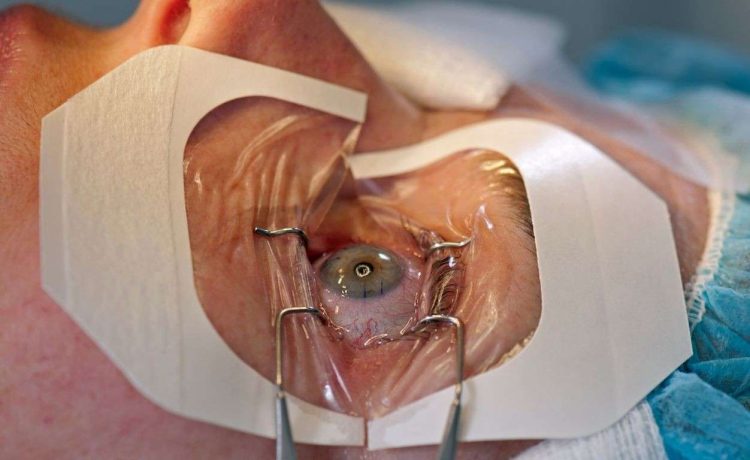LASIK Laser Eye Surgery: Procedure, Risks, Recovery, and Side Effects

Laser-Assisted In Situ Keratomileusis, widely known as LASIK, is a popular surgical procedure designed to correct common vision problems such as nearsightedness, farsightedness, and astigmatism. This quick, effective surgery can offer freedom from glasses and contact lenses for millions worldwide. However, like any medical procedure, LASIK has its intricacies, including associated risks, a defined recovery process, and potential side effects. Let’s explore what you need to know if you’re considering LASIK.
Understanding the LASIK Procedure
LASIK reshapes the cornea, the clear front part of the eye, to improve how light is focused on the retina, leading to sharper vision. The procedure typically begins with the surgeon creating a thin flap in the cornea. After lifting the flap, they use an excimer laser to precisely remove tiny amounts of corneal tissue, adjusting the curvature of the eye to correct refractive errors.
The entire LASIK process usually takes less than 30 minutes, with the laser portion lasting only seconds. Patients are typically awake during the surgery but receive numbing drops to prevent discomfort. Many people report noticing an improvement in vision almost immediately, although full results are seen after a few days to a couple of weeks.
Risks Associated with LASIK Surgery
While LASIK is widely regarded as safe, it’s essential to be aware of its potential risks, especially if you have certain health or eye conditions. Some people may not be ideal candidates due to factors such as:
- Thin Corneas: A thinner cornea may increase the risk of complications during and after the procedure.
- High Prescription Levels: Extremely high levels of nearsightedness, farsightedness, or astigmatism may not be fully corrected by LASIK.
- Certain Health Conditions: Autoimmune diseases or other chronic illnesses may impair healing, increasing the chances of infection or poor results.
For those who undergo the surgery, complications are rare but can include dry eyes, glare, halos, or under- or over-correction of vision. Although most patients achieve satisfactory results, these risks should be discussed in depth with your surgeon to ensure you have realistic expectations.
Recovery Process After LASIK
The recovery process following LASIK is generally quick, but it’s essential to adhere to postoperative care instructions for the best results. Immediately after surgery, patients might experience mild discomfort, itching, or a burning sensation. These symptoms typically subside within 24 hours.
Here are a few recovery tips:
- Rest Your Eyes: For the first few hours after surgery, resting your eyes is crucial to avoid strain and irritation.
- Avoid Rubbing Your Eyes: Refrain from touching or rubbing your eyes as this can dislodge the corneal flap, leading to complications.
- Wear Protective Eye Shields: These are often recommended for the first few nights to prevent accidental eye rubbing while sleeping.
- Follow Prescribed Eye Drops Regimen: Your surgeon may prescribe eye drops to manage dryness and prevent infection. Using these as directed will promote smoother healing.
Most people can return to their daily activities within a few days, though it’s advised to avoid strenuous exercise, swimming, and hot tubs for at least two weeks. Full vision clarity might take a few weeks to stabilize, but the majority see substantial improvement within a few days.
Common Side Effects of LASIK
As with any surgery, LASIK can have side effects. Some are temporary, while others may persist. Awareness of these potential issues can help patients make an informed decision about undergoing the procedure.
- Dry Eyes: A common side effect, dry eyes result from temporary reduced tear production following LASIK. This generally improves within a few months, but some individuals may experience longer-term dryness. Artificial tears or additional treatments may be needed for relief.
- Glare and Halos: Some patients notice increased glare or halos around lights, particularly at night. While this usually diminishes over time, a small percentage of individuals may experience these symptoms long-term.
- Fluctuating Vision: In the early stages of recovery, vision can fluctuate. Many patients experience improved stability within the first few weeks; however, it may take up to six months for vision to fully stabilize.
- Under- or Over-Correction: While LASIK is highly precise, there’s a chance that it may not correct your vision perfectly. In such cases, an enhancement procedure may be considered to achieve the desired outcome.
Is LASIK Right for You?
LASIK offers a promising solution for those with common vision problems looking to improve their quality of life. However, it’s essential to undergo a comprehensive eye examination and discuss your medical history with a qualified LASIK surgeon. While the procedure boasts a high success rate, understanding the potential risks, side effects, and realistic outcomes is key to a successful experience.
Many find the benefits of LASIK—enhanced vision, convenience, and freedom from corrective lenses—well worth the temporary discomfort and investment. With the right preparation and careful consideration, LASIK can provide a long-lasting solution for achieving clearer vision.












